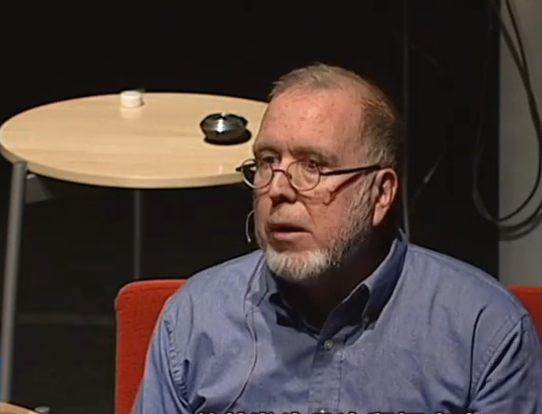So I did something else. I figured out 100 billion clicks per day, 55 trillion links is almost the same as the number of synapses in your brain.
我还发现,1天1千亿次鼠标点击和五万五千亿个连接,几乎就是大脑突触的数量。
A quadrillion transistors is almost the same as the number of neurons in your brain.
1千兆颗电晶体,几乎等同于大脑的神经数量。
So to a first approximation, we have these things -- twenty petahertz synapse firings.
这部机器每秒产生20千兆赫兹突触激发。
Of course, the memory is really huge. But to a first approximation, the size of this machine is the size -- and its complexity, kind of -- to your brain.
想当然的,记忆空间相当庞大。从刚刚的数据看来,这部机器的规格与复杂度可以说是等同于人脑。
Because in fact, that's how your brain works -- in kind of the same way that the Web works.
因为人类大脑的运作方式和网络的运作方式差不多,
However, your brain isn't doubling every two years.
只不过,人脑不会每2年成倍增长。
So if we say this machine right now that we've made is about one HB, one human brain,
假设我们制造的这部机器现在等于1个人脑。
if we look at the rate that this is increasing, 30 years from now, there'll be six billion HBs.
以它的成长速率,在30年后,它会等于60亿个人脑。

So by the year 2040, the total processing of this machine will exceed a total processing power of humanity, in raw bits and stuff.
也就是说,到了2040年,这部机器,处理原始资料的能力将超过人类。
And this is, I think, where Ray Kurzweil and others get this little chart saying that we're going to cross.
我想这就是,Ray kurzweil和其他一些人想用上图表来表达的。
So, what about that? Well, here's a couple of things. I have three kind of general things I would like to say, three consequences of this.
那这又说明什么呢?这里我想谈几点。我觉得总得来说是3点,我想说是3项推论。
First, that basically what this machine is doing is embodying. We're giving it a body.
第一,这部机器正在实体化。
And that's what we're going to do in the next 5,000 days -- we're going to give this machine a body.
在下一个5000天,我们将会赋予这部机器一个实体。
And the second thing is, we're going to restructure its architecture. And thirdly, we're going to become completely codependent upon it.
第二,我们将重组它的构造。第三,我们将要完全地与之共存。












